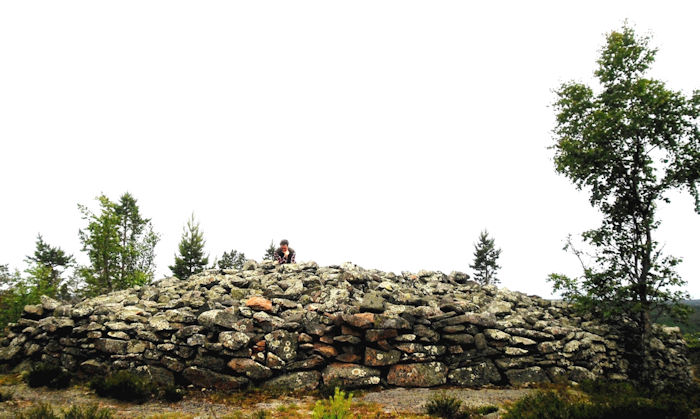Spir Mountain Cairns: Prehistoric Ancient Monuments To The Dead In Northern Sweden
Ellen Lloyd - AncientPages.com - In Northern Sweden, there are many fascinating and mysterious ancient sites and places.
Unfortunately, several of these historical sites have not been properly investigated because they are very difficult to access. Due to their remote location, they are also little known to their outside world.
Left: Location of Örnsköldsvik Municipality in Sweden. Credit: Fred J - CC BY-SA 2.5 - Right: Byviken, Örnsköldsvik Municipality. Credit: Sasja - CC BY-SA 3.0
The Ritual Use Of Cairns
The tradition of building cairns and stone settings in the coastal area is generally ascribed to the Bronze Age and Iron Age. Cairns and cairn-like monuments can be found in many different parts of Sweden, Norway, and Finland. In the city of Örnsköldsvik in Norrland, we come across some of the best prehistoric monuments that Sweden has to offer – the Spir Mountain cairns.
Many of the cairns were constructed near or overlooking what was once the seashore. They are standing about 30-50 meters above present sea level. During the Bronze Age, the Spir Mountain had once been an island within a bay.
One can find many ancient cairns along the coast of Norrland. Our ancestors placed them all the way from northern Uppland to Piteå in Norrbotten, a distance of about 860 kilometers. The coastal cairn-zone in Ångermanland is particularly rich and includes about 700 registered sites. There are roughly over 2,300 cairns and stone settings distributed along the northern coast, but they are not represented at all in the interior of Norrland.
The discussion about the ritual use of cairns is vast. It is generally held that the use of Bronze Age cairns and cairn-like stone settings is similar to the ritual use of Bronze Age mounds, that is, they represent burial monuments raised over individual persons.
Ancient cairns were of religious importance to our ancestors. It was believed that by frequently rebuilding the cairns and placing bones inside them, these ancient monuments would become active and enable communication with higher powers. Many of the cairns contain cremation burials and this indicated they appear to have been built as monuments to the dead.
Norrland is famous for its beautiful Northern Lights, but there are also many interesting archaeological sites here. Credit: Pavel.shyshkouski - CC BY-SA 4.0
A widely held suggestion concerning the underlying motives behind religious sacrifices, ritual ceremonies and festivals, is the attempt to maintain and support the existing "world-view" or "cosmological" order within a society or group over time.
The sacrificial rituals may vary from one society to another, but the motives are generally to receive luck, prosperity, forgiveness, stability, safety, fertility, etc., from the higher powers of both ancestors and gods.
It is reasonable to suggest that the ritual use of the cairn-monuments also aimed at creating contact between the living society and the spirits of the ancestors. In this practice, the cairns and stone settings became a medium through which contact with the ancestral spirits could be channeled.
Some researchers also suggest the cairns functioned as tribal markers for family group territories.
The Discovery Of Two Very Large, Well Preserved And Almost Perfectly Circular Cairns
Some years ago, archaeologists discovered two astonishing cairns in Ångermanland. The larger of the cairns is 13m in diameter. It is exceptionally well preserved, and almost perfectly circular. The stone required for construction must have required an immense investment of labor. The smaller cairn is just to the east and is 6m in diameter.
The Spir Mountain cairns have internal burial chambers with cists containing skeletal remains, accompanied by various grave goods. In some cases, the cairns have been used repeatedly, and have been expanded out from their original structures.
Archaeologist Carl L. Thunberg at the larger of the Spir Mountain Cairns. Credit: Ångermanlands fornminnesförening - CC BY-SA 4.0
The cairn-building tradition was widespread in Northern Sweden and the existence of cairns along the coast could possibly reveal different cultural and economical systems between the Bronze Age people. The social and economic structure in Bronze Age Norrland has by several archaeologists been viewed as u dualism between the coast and the inland area.
Scientists say there was an egalitarian structure with hunter-gatherers in the interior of Norrland and a more complex and socially stratified order with "ranked" farmers buried in cairns along the coast. The cairn-building tradition is, undoubtedly, one of the more evident material differences between interior and coast in Bronze Age Norrland.
Written by Ellen Lloyd – AncientPages.com
Copyright © AncientPages.com All rights reserved. This material may not be published, broadcast, rewritten or redistributed in whole or part without the express written permission of AncientPages.com
Expand for referencesActivating the Monuments - The Ritual Use of Cairns in Bronze Age Norrland by Hans Bolin
More From Ancient Pages
-
 New Theory On “Dry Moat” At The Pyramid Of Pharaoh Djoser
Archaeology | Jul 3, 2019
New Theory On “Dry Moat” At The Pyramid Of Pharaoh Djoser
Archaeology | Jul 3, 2019 -
 Unknown Sketch Of Jesus Christ By Leonardo Da Vinci Could Be The Holy Grail Of Art
News | Nov 24, 2020
Unknown Sketch Of Jesus Christ By Leonardo Da Vinci Could Be The Holy Grail Of Art
News | Nov 24, 2020 -
 Surtshellir Cave Reveals How Vikings Attempted To Prevent Ragnarök – Doom Of The Gods
Vikings | Jul 17, 2023
Surtshellir Cave Reveals How Vikings Attempted To Prevent Ragnarök – Doom Of The Gods
Vikings | Jul 17, 2023 -
 Mysterious Advanced Underground Civilization And A Secret Society – Astonishing Discovery And Connection – Part 1
Ancient Mysteries | Apr 21, 2018
Mysterious Advanced Underground Civilization And A Secret Society – Astonishing Discovery And Connection – Part 1
Ancient Mysteries | Apr 21, 2018 -
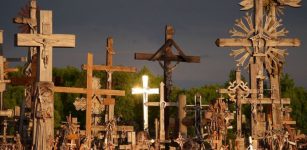 Hill Of 100,000 Crosses In Lithuania Survived Against All Odds
Featured Stories | May 23, 2017
Hill Of 100,000 Crosses In Lithuania Survived Against All Odds
Featured Stories | May 23, 2017 -
 MaizeCODE Sheds Light On How Corn Was Domesticated 9,000 Years Ago
Archaeology | Feb 14, 2025
MaizeCODE Sheds Light On How Corn Was Domesticated 9,000 Years Ago
Archaeology | Feb 14, 2025 -
 Seti I – Remarkable Pharaoh Who Saved The Kingdom Of Egypt And Gave It New Glory
History | Jun 15, 2021
Seti I – Remarkable Pharaoh Who Saved The Kingdom Of Egypt And Gave It New Glory
History | Jun 15, 2021 -
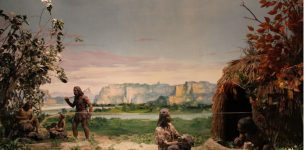 What Was The Agriculture Like In Southeast China In The Late Neolithic?
Archaeology | Apr 11, 2022
What Was The Agriculture Like In Southeast China In The Late Neolithic?
Archaeology | Apr 11, 2022 -
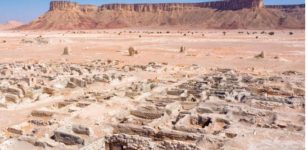 Unknown 8,000-Year-Old Human Settlement With A Rock-Cut Temple, Altar And Inscriptions Discovered In Al-Faw, Saudi Arabia
Archaeology | Aug 3, 2022
Unknown 8,000-Year-Old Human Settlement With A Rock-Cut Temple, Altar And Inscriptions Discovered In Al-Faw, Saudi Arabia
Archaeology | Aug 3, 2022 -
 Mysterious Mount Roraima Surrounded By Myths And Clouds Of Dense Fog
Featured Stories | Nov 13, 2018
Mysterious Mount Roraima Surrounded By Myths And Clouds Of Dense Fog
Featured Stories | Nov 13, 2018 -
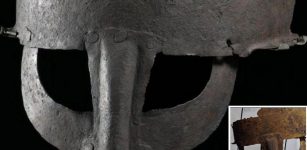 Why Is The Yarm Viking Helmet Special?
Archaeology | Aug 10, 2020
Why Is The Yarm Viking Helmet Special?
Archaeology | Aug 10, 2020 -
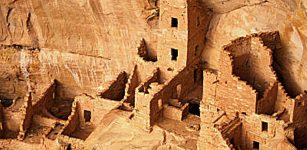 The ‘Anasazi’ Mystery: Sophisticated Civilization That Disappeared
Civilizations | Sep 20, 2015
The ‘Anasazi’ Mystery: Sophisticated Civilization That Disappeared
Civilizations | Sep 20, 2015 -
 Prehistoric House Of The Dead Discovered In Wiltshire – Is This The Burial Place Of Ancestors Of Stonehenge Builders?
Archaeology | Jul 17, 2017
Prehistoric House Of The Dead Discovered In Wiltshire – Is This The Burial Place Of Ancestors Of Stonehenge Builders?
Archaeology | Jul 17, 2017 -
 Ancient Mysteries Of West Virginia: Did Ancient Celts Visit North America Where They Left An Ogham Inscribed Bone Needle With Christian Symbols?
Artifacts | Mar 1, 2017
Ancient Mysteries Of West Virginia: Did Ancient Celts Visit North America Where They Left An Ogham Inscribed Bone Needle With Christian Symbols?
Artifacts | Mar 1, 2017 -
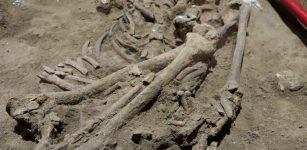 31,000-Year-Old Skeleton Missing Foot May Show Oldest Amputation
Archaeology | Sep 7, 2022
31,000-Year-Old Skeleton Missing Foot May Show Oldest Amputation
Archaeology | Sep 7, 2022 -
 Call Modern Humans Homo Faber, The Toolmaker – Not Homo Sapiens – Scientist Says
Archaeology | May 16, 2022
Call Modern Humans Homo Faber, The Toolmaker – Not Homo Sapiens – Scientist Says
Archaeology | May 16, 2022 -
 Ancient Mystery Of The Before – Time People – Traces Of An Unknown Lost Race – Part 1
Ancient Mysteries | Apr 3, 2019
Ancient Mystery Of The Before – Time People – Traces Of An Unknown Lost Race – Part 1
Ancient Mysteries | Apr 3, 2019 -
 Terracina – Ancient City Where Mythology And History Meet
Featured Stories | Jan 16, 2024
Terracina – Ancient City Where Mythology And History Meet
Featured Stories | Jan 16, 2024 -
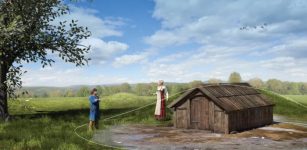 Rare Iron- And Viking-Age Mortuary Houses Discovered In Norway
Archaeology | Aug 27, 2024
Rare Iron- And Viking-Age Mortuary Houses Discovered In Norway
Archaeology | Aug 27, 2024 -
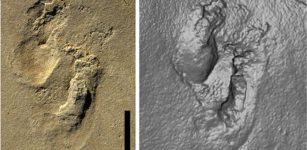 Controversial Discovery Of 5,7-Million-Year-Old Footprints On Crete Could Re-Write History Of Human Evolution
Archaeology | Sep 5, 2017
Controversial Discovery Of 5,7-Million-Year-Old Footprints On Crete Could Re-Write History Of Human Evolution
Archaeology | Sep 5, 2017



